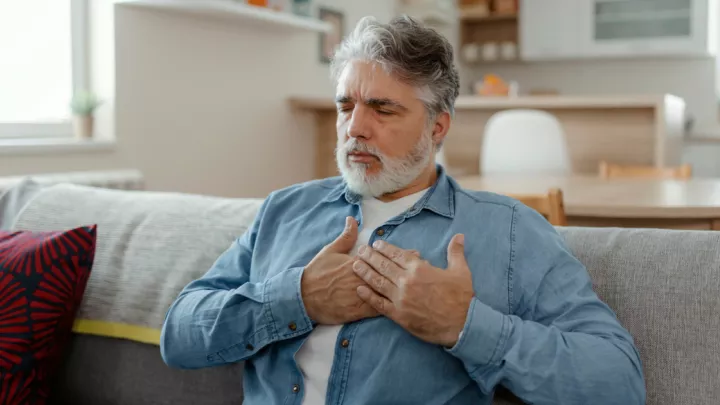An alternative to standard shoulder replacement surgery

As we age, most of us will experience shoulder pain at some time, whether it’s due to an injury or underlying arthritis. However, ongoing shoulder pain and restricted mobility can significantly impact your ability to perform daily activities. If your pain persists and becomes debilitating, it may be time to seek medical evaluation.
In the back of your mind, you may wonder if you may need a shoulder replacement? The good news is that advances in shoulder implant design and surgical techniques have made shoulder replacements a rapidly growing procedure.
Two of the primary reasons for shoulder replacement surgery include advanced arthritis and rotator cuff tearing or arthropathy. Symptoms that may indicate a need for shoulder replacement include significant pain and loss of motion. Weakness may also be a symptom and is more likely if you have a rotator cuff tear.
“By age 80, more than half of people will have some degree of a rotator cuff tear (the muscles and tendons surrounding the top of your upper arm),” says Richard Amendola, MD, Nebraska Medicine orthopaedic surgeon. “This can cause a lot of pain for some people, while others may not have any pain at all.”
There are two different types of shoulder replacement – anatomic total shoulder replacement and reverse total shoulder replacement. Not everyone who has chronic shoulder pain or a rotator cuff tear is a candidate for anatomic shoulder replacement surgery, especially patients that also have a torn rotator cuff.
An alternative procedure called reverse total shoulder replacement surgery may be an option for those with chronic shoulder pain and weakness due to a rotator cuff tear. “In any instance, either shoulder replacement can help with pain, stiffness, weakness and your range of motion,” says Dr. Amendola. “So if you have arthritis, the more severe these types of symptoms are, the more likely shoulder replacement will help you.”
Before deciding on a shoulder replacement, we will always try conservative measures first, notes Dr. Amendola.
Conservative measures include:
- Rest.
- Activity modification.
- Physical therapy.
- Acetaminophen.
- Nonsteroidal anti-inflammatories.
- Steroid injections.
“Oftentimes, physical therapy with or without a steroid injection will be enough to reduce inflammation and loosen up the joint enough to strengthen muscles around the shoulder to provide a greater range of motion,” Dr. Amendola says.
However, if pain persists after trying more conservative measures, shoulder replacement surgery may be the next step. “Pain is very subjective, so it’s really up to the patient to determine how much pain they are in and what they feel they need in terms of shoulder function,” says Dr. Amendola.
To determine what is best for you, consider these options:
Anatomic shoulder replacement surgery – this involves replacing the ball and socket with a metal ball and plastic socket. This is a more delicate and involved surgery as the rotator cuff must be taken down in front to access the shoulder and insert the new ball and socket. The success of the surgery is dependent on healing of the rotator cuff, which results in a slightly longer recovery time. For older individuals, recovery can be even more difficult due to arthritis, muscle and tendon degeneration and reduced blood supply. Recovery typically takes three to four months, with a complete recovery taking up to 12 months.
Candidates include:
- Patients with shoulder arthritis.
- Patients typically under 75 years old but there is no strict cutoff.
- Patients with an intact rotator cuff.
Reverse total shoulder replacement involves putting the ball where the socket is and a socket where the ball was. This changes the mechanics of the shoulder, making the big deltoid muscle on the side of your shoulder the primary muscle responsible for lifting your shoulder in the case of a deficient rotator cuff. In most cases, you will have less range of motion and will not be able to raise your arm fully above your head (about 140 degrees versus 180 degrees), but recovery is slightly shorter and the function of the shoulder is no longer dependent on the rotator cuff.
Candidates include:
- Older patients with advanced arthritis.
- Older patients with advanced arthritis and a rotator cuff tear.
“There is no right or wrong way to treat shoulder pain,” says Dr. Amendola. “It depends on a variety of factors, including age, extent of atrophy and tearing, how much the tendons contracted and the patient’s goals. Together, we can make the best decision that best fits their lifestyle.”
It may be time to seek medical advice. To schedule an appointment with one of our orthopaedic specialists, call 800.922.0000.







